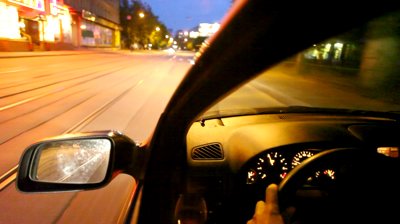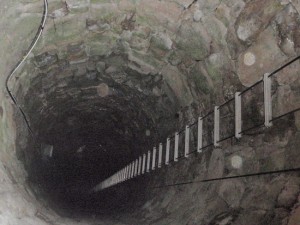Physics Equations: Kinematics Quiz

Do you need to get familiar with and know how to be able to work out physics questions and equations? Then this quiz is definitely for you. See how many questions you can answer correctly.
- 1.
A car starts from rest and accelerates uniformly over a time of 5.21 seconds for a distance of 110 m. Determine the acceleration of the car.
- A.
8 m/s2
- B.
8.1 m/s2
- C.
8.2 m/s2
- D.
8.3 m/s2
Correct Answer
B. 8.1 m/s2Explanation
The acceleration of the car can be determined using the formula a = (vf - vi) / t, where vf is the final velocity, vi is the initial velocity, and t is the time taken. In this case, the car starts from rest, so the initial velocity (vi) is 0 m/s. The final velocity (vf) can be calculated using the formula vf = vi + at, where a is the acceleration. Rearranging the formula, we have a = (vf - vi) / t = vf / t. Given that the distance covered is 110 m and the time taken is 5.21 seconds, we can use the formula vf = vi + at to find the final velocity. Rearranging the formula, we have vf = vi + at = 0 + a(5.21). Substituting the values, we get vf = 5.21a. Now, using the formula a = vf / t, we can substitute the value of vf to get a = (5.21a) / 5.21. Simplifying the equation, we get a = a. Therefore, the acceleration of the car is 8.1 m/s2.Rate this question:
-
- 2.
An airplane accelerates down a runway at 3.20 m/s2 for 32.8 s until is finally lifted off the ground. Determine the distance traveled before takeoff.
- A.
1700m
- B.
1720m
- C.
1730m
- D.
1740m
Correct Answer
B. 1720mExplanation
The distance traveled before takeoff can be determined using the formula for distance traveled during constant acceleration: distance = initial velocity * time + (1/2) * acceleration * time^2. In this case, the initial velocity is 0 m/s since the airplane starts from rest. The acceleration is 3.20 m/s^2 and the time is 32.8 s. Plugging these values into the formula, we get distance = 0 * 32.8 + (1/2) * 3.20 * (32.8)^2 = 0 + 0.5 * 3.20 * 1075.84 = 1720 m. Therefore, the correct answer is 1720m.Rate this question:
-
- 3.
A feather is dropped on the moon from a height of 1.40 meters. The acceleration of gravity on the moon is 1.67 m/s2. Determine the time for the feather to fall to the surface of the moon.
- A.
1.26s
- B.
1.27s
- C.
1.28s
- D.
1.29s
Correct Answer
D. 1.29sExplanation
The time it takes for an object to fall to the surface of the moon can be calculated using the equation t = sqrt(2h/g), where t is the time, h is the height, and g is the acceleration due to gravity. In this case, the height is given as 1.40 meters and the acceleration due to gravity on the moon is 1.67 m/s2. Plugging these values into the equation, we get t = sqrt(2(1.40)/1.67) = 1.29s. Therefore, the correct answer is 1.29s.Rate this question:
-
- 4.
A bike accelerates uniformly from rest to a speed of 7.10 m/s over a distance of 35.4 m. Determine the acceleration of the bike.
- A.
0.612m/s/s
- B.
0.712 m/s/s
- C.
0.812 m/s/s
- D.
0.912 m/s/s
Correct Answer
B. 0.712 m/s/sExplanation
The acceleration of the bike can be determined using the formula for uniform acceleration: acceleration = (final velocity - initial velocity) / time. In this case, the bike starts from rest, so the initial velocity is 0 m/s. The final velocity is given as 7.10 m/s. The distance traveled is 35.4 m. Since the bike is accelerating uniformly, we can use the equation distance = (initial velocity * time) + (0.5 * acceleration * time^2). Plugging in the given values, we can solve for time. Once we have the time, we can substitute it back into the first equation to find the acceleration. The calculated acceleration is 0.712 m/s/s.Rate this question:
-
- 5.
A baseball is popped straight up into the air and has a hang-time of 6.25 s. Determine the height to which the ball rises before it reaches its peak. (Hint: the time to rise to the peak is one-half the total hang-time.)
- A.
48m
- B.
49m
- C.
50m
- D.
51m
Correct Answer
A. 48mExplanation
The ball reaches its peak height halfway through its total hang-time, which is 6.25 s / 2 = 3.125 s. During this time, the ball is rising. The height of an object in free fall can be calculated using the equation h = 1/2 * g * t^2, where h is the height, g is the acceleration due to gravity (approximately 9.8 m/s^2), and t is the time. Plugging in the values, we get h = 1/2 * 9.8 m/s^2 * (3.125 s)^2 = 48.2 m. Therefore, the height to which the ball rises before it reaches its peak is approximately 48 m.Rate this question:
-
- 6.
A stone is dropped into a deep well and is heard to hit the water 3.41 s after being dropped. Determine the depth of the well.
- A.
55m
- B.
56m
- C.
57m
- D.
58m
Correct Answer
C. 57mExplanation
The depth of the well can be determined using the equation for free fall motion. The stone is dropped from rest, so its initial velocity is 0 m/s. The time it takes for the stone to hit the water is given as 3.41 seconds. Using the equation d = (1/2)gt^2, where d is the depth of the well, g is the acceleration due to gravity (approximately 9.8 m/s^2), and t is the time, we can substitute the given values to find the depth of the well. Plugging in the values, we get d = (1/2)(9.8)(3.41)^2 = 57.02 m, which can be rounded to 57m.Rate this question:
-
- 7.
It was once recorded that a Jaguar left skid marks that were 290 m in length. Assuming that the Jaguar skidded to a stop with a constant acceleration of -3.90 m/s2, determine the speed of the Jaguar before it began to skid.
- A.
47.2 m/s
- B.
47.4 m/s
- C.
47.6 m/s
- D.
47.8 m/s
Correct Answer
C. 47.6 m/sExplanation
The length of the skid marks and the acceleration of the Jaguar can be used to determine the initial velocity of the Jaguar. Using the equation of motion, s = ut + 1/2at^2, where s is the distance, u is the initial velocity, a is the acceleration, and t is the time, we can rearrange the equation to solve for u. In this case, the distance is given as 290 m and the acceleration is -3.90 m/s^2. Plugging in these values, we can solve for u, which comes out to be approximately 47.6 m/s.Rate this question:
-
- 8.
The observation deck of tall skyscraper 370 m above the street. Determine the time required for a penny to free fall from the deck to the street below.
- A.
8.69 s
- B.
8.89s
- C.
9.09s
- D.
9.29s
Correct Answer
A. 8.69 sExplanation
The time required for an object to free fall from a certain height can be determined using the equation t = √(2h/g), where t is the time, h is the height, and g is the acceleration due to gravity. In this case, the height is 370 m and the acceleration due to gravity is approximately 9.8 m/s^2. Plugging these values into the equation, we get t = √(2(370)/9.8) ≈ 8.69 s.Rate this question:
-
Quiz Review Timeline +
Our quizzes are rigorously reviewed, monitored and continuously updated by our expert board to maintain accuracy, relevance, and timeliness.
-
Current Version
-
Mar 18, 2023Quiz Edited by
ProProfs Editorial Team -
Mar 28, 2016Quiz Created by
Soffe1399
- Aeronautics Quizzes
- Aerospace Quizzes
- Agricultural Science Quizzes
- Astrology Quizzes
- Astronomy Quizzes
- Atom Quizzes
- Biochemistry Quizzes
- Biology Quizzes
- Biomechanics Quizzes
- Biostatistics Quizzes
- Biotechnology Quizzes
- Botany Quizzes
- Branches Of Science Quizzes
- Chemistry Quizzes
- Cytology Quizzes
- Easy Science Quizzes
- Ecology Quizzes
- Electrical Quizzes
- Embryology Quizzes
- Endocrinology Quizzes
- Engineering Quizzes
- Environmental Science Quizzes
- Epidemiology Quizzes
- Experiment Quizzes
- Forestry Quizzes
- Fossil Quizzes
- Gas Quizzes
- General Science Quizzes
- Genetics Quizzes
- Histology Quizzes
- Human Biology Quizzes
- Integrated Science Quizzes
- Invention Quizzes
- Library Science Quizzes
- Lighting Quizzes
- Liquid Quizzes
- Marine Biology Quizzes
- Microbiology Quizzes
- Molecular Biology Quizzes
- Nature Quizzes
- Neuroscience Quizzes
- Nuclear Science Quizzes
- Oceanography Quizzes
- Psychology Quizzes
- Science And Technology Quizzes
- Science Glossary Quizzes
- Science Knowledge Quizzes
- Science Practice Quizzes
- Scientific Method Quizzes
- Scientific Notation Quizzes
- Soil Science Quizzes
- Solar System Quizzes
- Solid Quizzes
- Zoology Quizzes
 Back to top
Back to top










